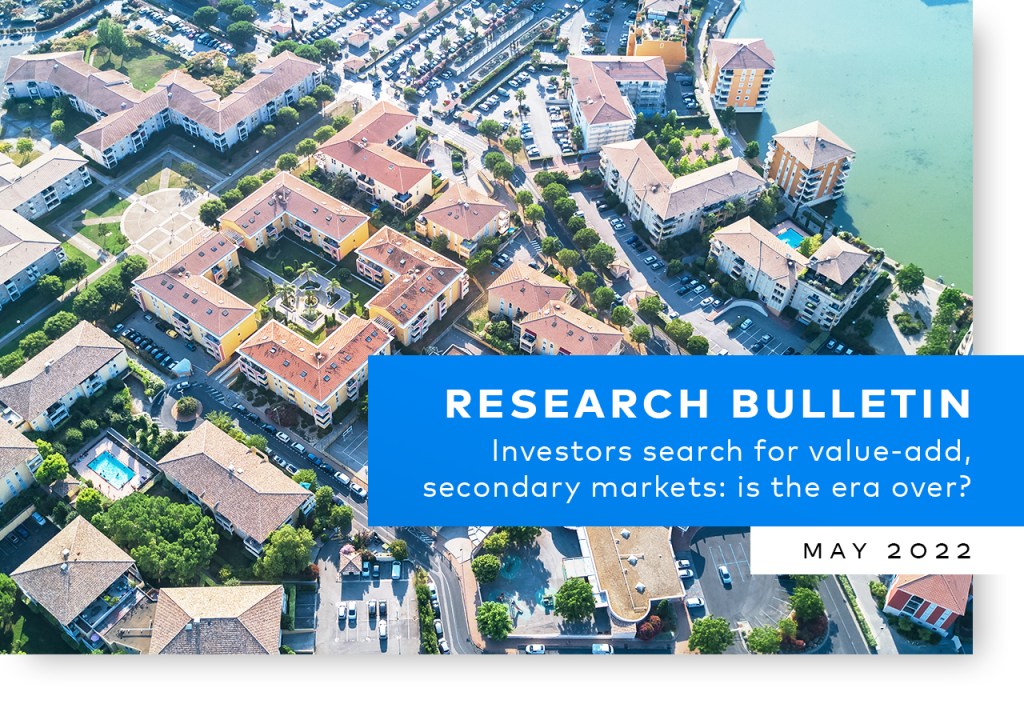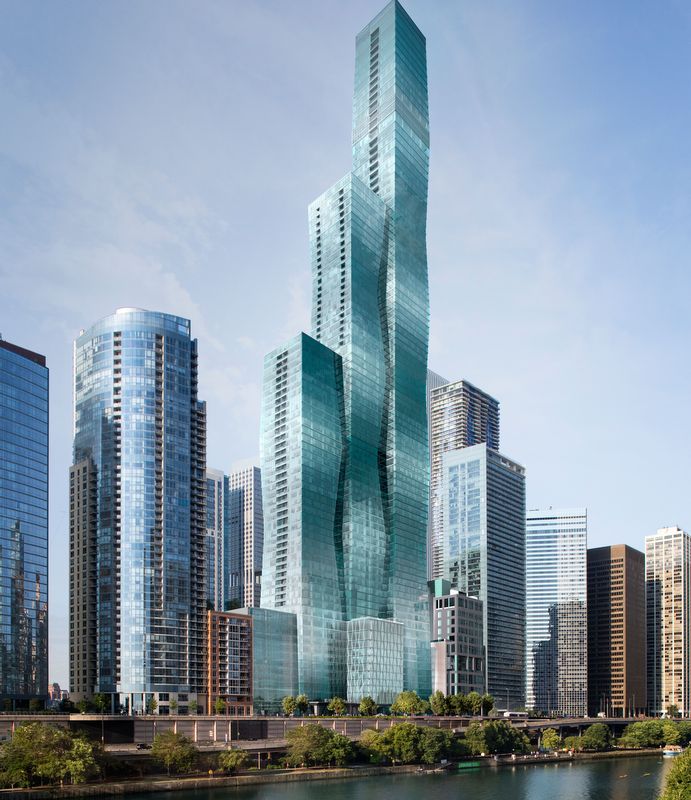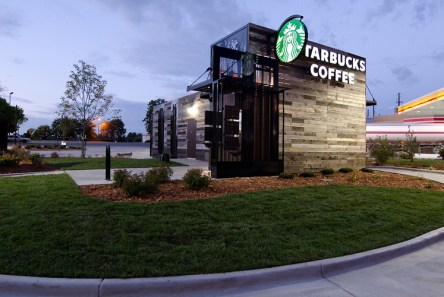Why are many leading real estate investment managers increasingly turning to the Yardi Investment Suite? Because this end-to-end solution delivers: Efficiency through automation. Automation reduces double entry from timesheets and disparate data systems. It also enables investors to access reports and forms wherever and whenever they want. Automation factors into increasing portfolio size without adding staff. Yardi Investment Manager, an element of the suite, automates subscription agreements through e-signature, capital calls and distributions. “The Investment Suite makes life easier for our real estate investment team, and thus our clients, by eliminating the need to integrate and validate data from multiple sources,” says Joe Biddle, director of IT for Baltimore-based real estate investment manager ABR Capital Partners. Another example of efficiency comes from Holladay Properties. The full-service commercial real estate firm in South Bend, Ind., saw a five-fold increase in its investor base in five years. Keeping pace with that growth required greater efficiency in every area of the company’s business – which the Yardi Investment Suite enabled. “We not only succeeded in satisfying all client expectations. And we did it without needing additional staff,” notes Wills Gardner, Holladay’s director of capital planning. Success through centralization. Centralizing all communication, transactions and opportunities on the Yardi Investment Suite platform also serves to simplify the investment lifecycle. “We use Yardi Investment Manager to call capital, make distributions through waterfall promote structures and eliminate manual tracking of capital activity,” says Scott McGinness, CFO, of Cohen Asset Management Inc., a Los Angeles-based private real estate investment company. McGinness continued: “Our staff doesn’t have to spend time assembling information from disparate sources, then preparing and distributing it. They can direct their energies to more productive activities such as researching investment opportunities and strengthening client relationships.” All information, when investors want...
Matrix Trading Bulletin
Multifamily Sale Prices Jump
Real estate investors are gung-ho on multifamily – so much so that last year they were willing to pay more for it than ever before, especially in certain circumstances. Whether that trend continues or a bubble burst is on the horizon is the focus of a new Multifamily Trading Bulletin from Yardi Matrix. Record-high property sales and prices were recorded in 2021. Yardi Matrix tracked $215 billion of multifamily property sales in the U.S. in 2021 that traded for an average of $192,105 per unit, a year-over-year increase of 21.6 percent. The new bulletin analyzes repeat sales over the last decade in Matrix’s database of 83,000 properties. Among those, 4,500 multifamily properties in the US — about 5.3 percent – sold at least three times over the last decade. The average compound annual growth rate for the repeat-sale properties averaged 17.7 percent nationally. Analysts found that rents rose rapidly during the 10-year cycle, but not as much as price appreciation. Multifamily rent growth in 2021 was up 14 percent for the year, a record, but rent growth has been above the long-term average for over five years (except for during COVID-19 lockdowns). “The rapid growth in pricing reflects a combination of factors: the exceptional amount of liquidity in real estate and multifamily, the extremely strong rent growth, the low cost of financing as interest rates bottomed and debt costs were near historical lows, and the optimism about the sector’s prospects in the next few years,” says Paul Fiorilla, director of research for Yardi Matrix, who authored the bulletin. Deal flow roared back in 2021 to a record $215.3 billion, a 67.3 percent increase from the prior high point in 2019. 2021 also set new records with 6,488 properties sold and 1.34 million units traded. “The extraordinary increase in pricing likely to be threatened going forward by the increase in interest rates and questions about the economy, which has already prompted a slowdown in investment activity and will likely end the period of appreciation growth,” Fiorilla stated. What sort of assets are driving these increases? Investors know what they like, and that includes smaller assets in secondary markets geared toward working-class renters. They are considered to have rent-growth potential due to relatively low rents and location in markets with above-trend rent growth. They will also pay a premium for strategically located value-add properties. The most popular regions include secondary markets and areas with strong in-migration, particularly Texas, the Southeast and Southwest, where demand and rent growth is growing faster than the rest of the nation. Relatively few properties in gateway markets made the list of repeat sales. Yardi Matrix tracks properties in 162 markets with 50 or more units. Gain more insights from the new Multifamily Trading Bulletin from Yardi...
Opportunity Zones
Risk or Potential?
Federal tax reform enacted in December 2017 reduced or eliminated capital gains taxes for investments directed toward multifamily, commercial and self storage real estate located in more than 8,700 low-income “opportunity zones.” This source of capital was expected to seed startups, accelerate business expansions, create jobs, improve housing options and revitalize built environments in areas where about 35 million Americans live. A Yardi Matrix white paper published in 2019 noted that the zones initially appealed to “a new base of largely untapped investors” and offered value-add opportunities in “new markets that were thought to be too small or risky as investment strategies.” Many policymakers touted opportunity zones as a way to create jobs and lift up underserved communities and minority-owned businesses. Critics assert that the program lacks transparency and mostly helps well-heeled investors and developers. A year-and-half since investors joined the program in earnest (many waited until final Treasury Dept. regulations were released in December 2019), has the opportunity zone initiative fulfilled its promise? Expert opinion is split. The White House Council of Economic Advisors, for example, reported in October 2020 that the program had attracted $75 billion in new investments to distressed American communities, $52 billion of which wouldn’t otherwise have entered the zones, and increased private property values within the designated areas by 1.1%. This infusion of capital represented “a powerful vehicle for bringing economic growth and job creation to the American communities that need them most,” holding the potential to “lift at least one million Americans out of poverty [and decrease] the poverty rate in opportunity zones by 11%,” U.S. Department of Housing and Urban Development official Denise Cleveland-Leggett said at the time. Michael Novogradac, managing partner of Novogradac, a San Francisco-based professional services organization, says the program “has seen notable...
Stable Investment
Future Affordable Housing
Through the best and the worst economic times, affordable housing has emerged as a stable sector. The demand for affordable housing continues to rise while creative private partnerships deliver fresh capital to fill the pipelines. With those conditions aligned, affordable housing is an investment that can weather turbulent times. Enduring investments Multihousing News reports a continuing upward trajectory for affordable housing demand. The current pipeline is insufficient to fill the current need, and if recessionary conditions prevail, the demand for affordable housing will continue to drastically outpace supply. While demand may pique investors’ interest, alone it is not enough. Affordable housing may prove to be more beneficial investment than other multifamily assets due to Section 8 vouchers. The rental housing assistance program creates a barrier of protection around privately-owned affordable properties. During tough economic times, Section 8 vouchers limit rent default rates in comparison to market rate housing. The benefit of investing in affordable housing extends beyond ongoing demand and security against defaults. Affordable housing leaders are positioning themselves for longevity and stability. Creative partnerships Public-private partnerships are becoming more prevalent, offering creative solutions for funding, development and property management. Individual firms as well as municipalities have come to rely on public-private partnerships during the ebb and flow of economic trends. Private firms are respected for their ability to complete projects while balancing quality and efficiency. Most commonly, private general contractors will use their connections to development and construction firms to complete projects for local governments. There are, however, exceptions to this dynamic. Yardi client Conifer Realty forged an investment partnership with Belveron Partners that allows Conifer to develop, build, own and manage properties under one roof. Conifer’s investment extends beyond a single project or portfolio to a company-level partnership that is a game-changer...
Chicago Multifamily
Strong Demand Continues
With healthy demand almost balancing out supply, Chicago’s multifamily market seems to have left the fear of overbuilding behind, at least for now. The city has been adding jobs at a more accelerated pace—particularly in the construction, manufacturing and education and health services sectors— and has been strengthening its tech hub status, which fueled demand for housing across the metro. According to a recent Yardi Matrix multifamily report, at the end of last year, rent growth reached the highest value since 2016—2.5 percent, which, although still below the national rate, represents an achievement for the market. Growth was mainly led by suburban submarkets such as Grayslake and Chicago-Heights North, but several neighborhoods near Downtown, including Hyde Park, Bronzeville and South Shore, also recorded rent increases. Yardi client Pioneer Acquisitions is a multifamily investor with a portfolio of roughly 2,000 units in Chicago. James Peterson Jr., founder & principal, said that “the fundamentals in Hyde Park are very strong” and the neighborhood has been attracting a lot of interest from investors and residents priced out of Chicago’s core areas. Peterson reveals what other submarkets are strong for investment, the evolution of rent growth in 2019 as well as the company’s strategy for the year ahead. What are the strengths and weaknesses of Chicago’s multifamily market? Peterson: Strong demand remains one of the main strengths of Chicago’s multifamily market, particularly in Hyde Park and the far north side neighborhoods. We continue to see tenants being priced out of near north side neighborhoods and moving north, along the “L” lines, to find units that fit their budgets. One of the main weaknesses, particularly downtown, is the continuing introduction of new supply with elevated amenities and leasing incentives, which encourages tenants to trade up to newer buildings. Soaring real...
Managing Risk
UK Investment Think Tank
Yardi and Property Week assembled five property investment experts to discuss low-risk ways to find value amid fierce competition for prime property. Industrial, traditional PRS, build to rent and student housing were seen to offer opportunities, with a tough retail climate and political risk on the downside. Panelists Ian Benson: Finance Director, Kier Property Meg Brown: Director of equity placement, Colliers Howard Freedman, Partner/head of real estate and construction, RSM Jamie McCombe, Partner/head of IM, Cluttons Kris McPhail, Co-fund manager, Lime Property Fund, Aviva Moderator: David Parsley, Property Week contributing editor With prime property yields tightening and investors looking for value without too much risk, our think tank participants addressed the key issues of where funds should place their cash and what factors – both positive and negative – may affect their decisions and returns. Where are the hot sectors in real estate investment? MB: This is something we think about a lot, as we typically advise pension funds and groups where risk really matters, as they are investing money they can’t really lose. So right now we’re fans of things that are not correlated to economic cycles, and that’s largely mega-themes such as student housing, PRS and BTR, micro living and, to some degree, the co-working concept. JM: We feel capital growth is going to be more muted in this market, so there has been a flight to income return. We’ve been looking at some of those long-term income plays, such as hotels and student accommodation. The industrial sector has obviously been improving in the past 12 months, predicated on investors seeing some future rental growth, so yields have fallen quite significantly, but in the right areas and at right rent, there is still something to go for in terms of return. The prime end of the...
Investment Tech
Improving Partnerships
A key investment management trend over the past few years is the increasing demands limited partners (LPs) are placing on their general partners (GPs) such as additional key performance indicators, fee disclosures, or a more active relationship, among others. Changes in the relationship between LPs and GPs involved in real estate investment, the maturation of the investment management industry and increasing sophistication of asset aggregators are some of the principal factors. Co-investment came into favor as a strategy for LPs, creating new challenges even as it solved others. In this new paradigm, advancements in investment management technology is key to making a potentially fraught relationship work for both sides. Analyzing opportunities and performance has created new challenges for LPs and GPs involved in private equity real estate investments. For example, LPs often request different standard data than GPs are accustomed to using; GPs must produce custom data extracts for each LP, a cumbersome and time-consuming exercise. For their part, the LPs often struggle to compile and aggregate data from GPs in analyzing their investments. With these challenges, many LPs and GPs are seeking new tools for collaborating and managing their real estate investment activities. One increasingly popular option involves employing a single connected platform that draws information from disparate data sources and aggregates complex ownership structures. Such a platform provides clarity into investment programs, manages risk and allocation, and easily calculates returns and compares them to benchmarks. This approach can improve deal tracking, communication and investment decisions for LPs and GPs. Unifying operational and financial data within a single platform helps GPs by automating the complex accounting transactions associated with fund management. They can more easily manage complex ownership structures, consolidate financials and report to investors. Capital calls can be timed to up-to-the-minute operating...
Investment Insight
From Rob Teel of Yardi
Investment capital isn’t in short supply—plenty is available from China, Europe, the U.S. and other sources. So why are real estate investors working harder, yet finding fewer high-return opportunities? One dampening factor is increased investor choosiness arising from due diligence activities that increased starting in 2009, when a low market virtually guaranteed returns and asset prices would rise. Plus, the regulatory climate has thickened. But the main problem today is that the marketplace, especially the U.S. with its abundance of capital, is chasing relatively few investment opportunities. Can fund managers under pressure to place money they’ve raised find, evaluate and capitalize on good deals? Yes, says Rob Teel, Yardi’s senior vice president of global solutions—if they have the means and ability to unearth opportunities they ordinarily wouldn’t consider, or even know about. We asked Teel for insight into how technology can be an ally in the effort to identify investment opportunities and manage assets through their life cycle. Q: What’s a key trend among the real estate property owners, managers and investors you encounter? Teel: A lot of people are seeing the advantage of automating investment accounting, performance measurement and investor reporting with an integrated investment and asset management system. They realize that having all decision-making tools within a single system exceeds what’s possible with spreadsheets and separate databases. Managers dealing with hundreds of combined funds, entities, properties and investors are happy to be free of manually uploading data, relying on cumbersome spreadsheets and mining data from separate systems. Q: What matters the most to investment managers as they evaluate potential acquisitions? Teel: Getting a complete picture that helps them decide to acquire an asset and the best option and optimal time for renovating or selling it. This underscores the importance of automating the...
Merging Traffic
Real Estate Asset Performance
In September 2016, real estate became the 11th Global Industry Classification Standard sector. Morgan Stanley Capital International Inc. and S&P Dow Jones Indices, which maintain the standardized classification system for equities, described the action as reflecting the “growing importance of real estate in the world’s equity markets” and “the position of real estate as a distinct asset class and a foundational building block of a modern portfolio, rather than an alternative.” The GICS classification means real estate asset performance is no longer blended into a larger financial picture but stands fully accountable on its own merits. This has prompted many companies to capitalize on real estate’s status as an increasingly viable asset class. For example, Cousins Properties Inc. completed the spinoff of Parkway Inc. into an independent REIT in October 2016. In March 2017, shopping center owner, operator and developer Regency Centers Corporation merged with Equity One Inc. to form a $16 billion company. Government Properties Income Trust acquired First Potomac Realty Trust for $1.4 billion later that year. Alex Stanton, Yardi’s industry principal for commercial, offers insight into best practices for participating in the growing mergers and acquisitions trend. The following are his thoughts on how to prepare: The increasingly common exchanges of real estate following the GICS designation aren’t the exclusive province of the big players; it’s happening with medium and small real estate companies as well, including enterprises that are family owned and operated. Mergers and acquisitions hold high potential to benefit shareholders, staff and customers of the newly created entity—but only if the organizations involved put the right strategy and assets in place. Here are some ways to do that. Put People First A company may be privately owned and dreaming of being a REIT, or planning to open funds...
Student Housing
Successes Boost Confidence
Just as industry experts thought the interest in student housing may begin to plateau, the prospects for growth are shining brighter. Investors made $1.1 billion in student housing property transactions in the first quarter of 2017, reports CRBE. This figure excludes portfolio deals, which held their own: Q1 ended with the sale of a $1.6 billion portfolio, which is a great start to the year. Local and foreign investors are showing confidence in the student housing sector. Student housing is historically more stable throughout economic fluctuations. There are fewer enrollment surges during times of prosperity and fewer dips in enrollment during challenging times, reports TH Real Estate. Tom Park, Senior Director, Strategy & Research at TH Real Estate, explains: “Rental growth in the sector has proven to be less volatile than that of conventional apartments – partially as a result of the sector being less economically sensitive. Results for some of the largest players in the market show rental growth volatility, as indicated by the standard deviation, was lower than conventional apartments and capital expenditures are in line with those of conventional apartment.” College enrollments have continued to rise since 2008. Most notably, 2014 ushered in $3.5 billion in sales, topped in 2015 with $6 billion and $10 billion in 2016. The consistent growth contributes to the perception that student housing is a recession-resistance sector. Enrollment in and applications for post-graduate programs are also rising. TH Real Estate estimates that about 3 million students enrolled in post-graduated programs in fall 2016. That figure has consistently risen since 2010 when enrollments maxed at about 2.2 million. Post-graduate studies will extend the demand for student housing Though enrollments continue to grow, state budgets for education are shrinking. Public colleges and universities seek out institutional investors and developers...
Shifting Skylines
Chinese Firms Invest in Chicago
Several landmark projects break ground in the U.S. just as headlines herald the slowdown of real estate investments by the Chinese. According to a Bloomberg report, American real estate transactions with China are slowing down for the first time since 2011. The loss of momentum is a result of constraints issued by the Chinese government to minimize capital flight. While new investments dwindle, the nation’s skylines are beginning to see the fruit of the past surge: Hong Lei, consul general of China in Chicago, reports that Chinese firms have invested nearly $13 billion in real estate throughout the Midwest in the past 15 years. A recent project, which broke ground the summer, will be one of the nation’s largest investments. With a cost of $950 million, Vista Towers of Chicago (rendering, left) will be the largest real estate investment by a Chinese company in the US. The project is a joint venture between America’s Magellan Development Group and China-based conglomerate Wanda Group. The international presence of Wanda Group spans 300 million square feet of real estate, including retail, commercial, and hospitality. Vista will be the first notable project in The Windy City. Jeanne Gang, a respected Chicago-based architect and MacArthur fellow, designed Vista Towers. Standing 93-stories tall, it will be the third tallest building in Chicago. The luxury site will include a hotel and 406 condominiums. Condo rates will range from $1 million to $18 million. Across the country, Los Angeles records that China is responsible for seven out of 18 land deals made since 2014. Oceanwide Plaza (rendering, left) will be one of the largest Chinese investments in Los Angeles. With an estimated cost around $1 billion, the nearly 5-acre site will hold three towers including a hotel, 150,000-170,000 square feet of retail,...
Investing in Humanity...
Sustainable Investments
Curious about sustainable investments? You’re not alone. Sustainable investments result in better operational performance, improved stock prices, and proven psychological benefits. So why aren’t more advisors talking about it? JP Morgan defines sustainable investments as “investment approaches that enable investors to integrate environmental, social and governance (ESG) considerations into their investment strategies and create positive benefits for society.” In 2014, an estimated $21.4 trillion of global assets were reported as sustainable investments. That is an $8 trillion increase from 2012. This field of investment continues to grow due to favorable results: The University of Oxford and Arabesque Partners reports that 88% of companies that practiced effective ESG management were also able to improve operational performance. Stock prices performance improved for 80 percent of companies that prioritized ESG issues. JP Morgan and the University of Oxford have not analyzed the warm and fuzzy sensation that can come as a result of investments with a higher purpose. But others have. New York Times compiled several studies that examine the connection between acting for the greater good and emotions. Sources conclude that supporting causes that we feel good about reduces stress levels and can even extend lifespans. When we feel positively about a cause that we support, we are more likely to support that cause wholeheartedly and consistently. Do-gooding simply makes us feel better about ourselves and the prospects of the world that we live in. Meir Statman’s What Investors Really Want explains that investors value an emotional connection with the company or organization in which they are investing. Such strong emotions can “drive prices and performance above the funds and fundamentals involved,” reports JP Morgan. With financial and personal benefits to gain, why aren’t more asset managers broaching the topic with clients? Only 63 percent of...
Fund Management Tips
Terry Gowan, Yardi
Property fund management, by its very nature, is a complicated undertaking. Fund managers can avoid the more egregious pitfalls of the business by following a few ground rules, according to Terry Gowan, regional director of Australia and New Zealand sales for Yardi®. “With a little planning, you can save staff time, ensure data reliability, meet compliance requirements, satisfy investors and tenants. And making effective use of technology that delivers real-time visibility into investors, funds, investments, properties, opportunities and clients is another good strategy,” says Gowan, who works closely with almost half of Australia’s top performing real estate investment trusts and presents at property fund management industry events. Here are Terry’s top tips for successful fund management: Invest in an industry-specific system. “Get your fundamental accounting, processes and procedures correct from the start. Custom-made software systems are never cheaper than off-the-shelf systems designed for your industry. Use what the most successful of your peers are using and duplicate it with a provider that can stand the test of time.” Don’t go cheap. “Make sure the system you choose can deal with intercompany transactions, fees, ownership structures, foreign exchange, and properties. Avoid low-end options that aren’t efficient for these and other aspects of property and real estate investment management.” Establish an audit trail for financials. “Capturing low-level transactional data that reconciles every month is crucial to being auditable for compliance purposes.” Put everything into your database that you possibly can, while limiting disparate systems. “When the central source of truth for your data resides in a single database, you’ll have visibility from the fund through to the tenant, any time you need it. This approach avoids the manual labor and potential data loss associated with using interfaces and/or data warehouses or multiple custom reports to piece...
Community Gardens
Investment Insights
As a gardener, I took personal interest in the community gardens popping up throughout the US. I expected to find plenty of resources on the practicality and returns on such projects. Unfortunately, I had no such luck. What I’ve found, though, may help you determine if a community garden is a worthwhile addition to your multifamily property. We can begin with the question that is likely in the forefront of your mind, “What will it cost me?” That answer depends on several factors. Primarily, the costs of the garden depends on its size and the materials used. Rot- and pest- resistant cedar wood will cost more than pressure treated wood, for example. When using local, recycled wood, you may just pay for transportation. Then your costs will vary based upon how the apartment garden is established. In most cases, the site is responsible for the installation. The site furnishes irrigation, a few tools, and perhaps the first season of plants (since an active garden is an easier sell than bare earth). With greater involvement, the costs increase to accommodate maintenance of the site, perhaps a part-time gardener or additional time on the clock for maintenance techs. The potential returns also depend on whether or not residents pay a fee for using plots, or whether they are offered without charge. With those factors in mind, it is impossible to pinpoint the exact costs and returns for a community garden. But the following information may give you a ballpark idea of a garden’s value. “We’ve had our community garden for several years now,” says Vanessa Jackson, Leasing Consultant at Greystone Farms Apartments in Columbus, GA. “Honestly, most people don’t come in asking about it. But once we drive them around the property and we point it...
Multifamily Investment
Outlook remains positive
This week, Yardi’s Jeff Adler (Vice President of Matrix) and Jack Kern (Director of Research/Publisher of MHN, CPE) presented a biannual webinar on the health and welfare of the U.S. multifamily investment sector. In an hour-long presentation, Adler and Kern summarized the various forces that impact investment, including job growth, oil prices, rent growth and supply. Data is derived from the reports created by Yardi Matrix, the industry’s most comprehensive apartment market intelligence platform. While striking a more cautionary note than six months prior, the outlook for multifamily investment remains very positive, Adler said. Occupancy is high and rent growth strong at 6 percent. “U.S. multifamily is still the place to be (for investors), even if the ride is at risk of a few potential transitory bumps in the road,” he commented. “The only caution I have is that the risk of global, debt driven macroeconomic dislocation, has, in our view, risen.” Concern about unstable economies in China, Japan and Europe, as well as slow growth in GDP at home, prompted the tempering of the outlook. “The US economy is the one eyed man leading the blind. If you look at the Eurozone, performance has been horrific. In Japan, it is a 20 year deflationary deadbeat. China is going through the right kind of transformation, but it’s going to take time and they’ve misallocated a whole bunch of capital,” Adler said. Looking at markets on a regional basis, some slowdown has been noted in previously red hot cities, Adler noted. “There’s deceleration going on in Houston, Denver, and San Francisco, but acceleration in Orlando, Atlanta and Phoenix,” he said. One factor that is influencing growth is what Adler called “intellectual capital nodes,” suburban neighborhoods with an abundance of creative individuals, a supportive business climate, and lifestyle amenities. “These are places where the value of place is most likely to increase,” Adler said. Seattle, Denver and Atlanta are all home to such submarkets. When it comes to supply, new apartment stock is being delivered – about 250,000 new units are in lease-up now, with a half-million under construction. But consumer demand remains high enough to absorb those new units and remain hungry for more. “Occupancies are high and sustainable in the 96 percent range for stabilized property,” Adler said. A big differentiator for apartments these days remains the in-unit washer dryer, he noted. Investors looking to add value to their properties should consider that amenity first as a way to stand out. The next Matrix outlook webinar will be presented in November, 2016. Find the presentation deck from Wednesday’s event here. Visit http://www.yardimatrix.com/ to learn more about the product, reports, and upcoming...
Wall of Capital
Investors Bullish about CRE
Commercial real estate has seen a remarkable run-up in values in recent years, driven by steady job growth and robust fundamentals. The strong performance coincides with the economic recovery in the U.S., but even so, the outsized increases are well more than would normally be expected given moderate GDP growth in the 2% range during that time. Overall, property values in the U.S. are up 17.7% from the last peak in December 2007 and 66.1% above the trough in January 2010, according to the Moody’s/Real Capital Analytics Commercial Property Price Index (CPPI). Major markets and apartments are doing even better. RCA’s core six markets (New York, Boston, Washington DC, Los Angeles, Chicago and San Francisco) are 39.2% above the last peak and 126% above the last trough, according to the CPPI. Meanwhile, apartments are 60.7% above the 2007 peak and 111.3% above the 2010 trough. So what is driving the rate of increase? Simply put, there is a lot more capital looking to buy commercial properties than owners that want to sell. Commercial real estate is increasingly popular with a wide range of institutional investors, for a number of reasons. As noted, the sector has performed extremely well, which always drives capital, but it is more than that. Commercial real estate produces a regular dividend that is very attractive. The average yield for core real estate is roughly 5.5% and for public REITs it is about 4%. Compared to other fixed-income products (say sovereign debt) that is extremely attractive, not to mention that the debt is secured by properties. Another attraction for foreign investors is to hold assets in American dollars. Whether Americans are satisfied with the level of growth in the economy, compared to other parts of the world the U.S. is seen...
Self-Storage
High Demand, Limited Supply
The cat is out of the bag. Self-storage is a hot industry with hefty returns and minimal operating costs. If you haven’t explored the possibilities in this sneaky big market, you may be running out of time. Vacancy rates have gradually declined in the past seven years as rentals proved to be a more favorable option for young adults, empty nesters, and those facing financial challenges during and after the recession. Even as the economy regains its health, self-storage continues to do well as people relocate for work or for more comfortable living. By the end of 2014, self-storage occupancy reached a historic high of 90 percent. Yardi client Morningstar Properties president Dave Benson weighs in, “It’s really been strong occupancies and good demand as housing comes back, as jobs come back and people start to move around a little bit,” he says. 2015 has enjoyed a great start. Morningstar Properties exceeded its capital goal for a $75 million private-equity fund that will acquire at least 10 properties. Other Yardi clients also have ambitious plans for the year. Cubesmart has begun a 36-property acquisition from Chicago-based Harrison Capital. Ernst & Young Capital Advisors spotted LifeStorage LP with $120 million in equity to expand operations across the nation. Yet as institutional investors with diverse portfolios continue to pounce on Class A opportunities within the sector, top-notch assets have become harder to find. New developments are being built prospectively, often scooped up before being marketed. Second quarter of this year, we may see the self-storage behemoth lose its fangs, at least temporarily. Cap rates are declining and new construction is slowly forthcoming. “We were seeing stabilized assets trading at 5.5 percent cap rates, where this sector doesn’t usually see rates of less than 6 percent,” reports R....
David Antonelli
Bentall Kennedy
Early in his career, a well-meaning mentor suggested to David Antonelli that he might consider focusing on finance, rather than real estate, so he could easily transition between asset classes during variable economic times. “In the end, I liked real estate so much that I nodded politely and went on with my career. Twenty-five years later, I’m still in the real estate business,” said Bentall Kennedy’s executive vice president and portfolio manager for its Multi-Employer Property Trust (MEPT), the firm’s open-end commingled private equity real estate fund and one of the largest of its class. Antonelli talked to us about the high-performing MEPT and where it is focusing its investment dollars. Give us a brief synopsis of the background of the MEPT fund and its investment emphasis? Antonelli: MEPT is an open end, core private equity real estate fund that invests in institutional quality commercial real estate throughout the United States. The investment objective of the fund is to provide competitive, risk adjusted total returns throughout all real estate cycles. The fund was founded in 1982 by Bentall Kennedy and it now has over $6.8 billion in gross assets, along with 320 investors, which makes MEPT one of the largest private equity real estate funds in the U.S. What has the fund’s return rate been to date? Antonelli: Since its inception, the fund has produced a 7.85 percent total return, and over 90 percent of that total return has come from fund income. MEPT’s total return, I think it’s important to note, exceeds most pension plans’ actuarial assumptions. The fund’s investment strategy is focused on maintaining strong and stable income, building a diversified modern portfolio, providing superior liquidity, and it’s also executed with strong commitment to the principles of responsible property investing, similarly or...
Green Retail Boom
Better Performance, Higher Profits
The demand for sustainable retail properties is growing, demonstrated by an influx in applications at accreditation organizations, top tier rents, and high trade rates. According to Lux Research, green building is now a $260 billion market with retail as one of its most vigorous verticals. Green building certification programs such as LEED for Retail have witnessed an increase in applications. The “LEED in Motion: Retail” report states that more than 8,000 retailers worldwide participate in LEED and more than 1.2 million people experience a LEED-certified retail space on a daily basis. Participating companies include Target, Kohls, Bank of America, and Starbucks, which recently celebrated its 500th LEED-certified store. The transition towards greener retail spaces corresponds with reports that retailers with LEED Gold certification or greater outperform their conventional neighbors. Studies by Nils Kok, Ph.D., executive director of the Global Real Estate Sustainability Benchmark (GRESB) suggests that sustainable office buildings trade at a 13 percent premium over conventional buildings. Green office structures also receive rental rates that are at least three percent higher than their conventional counterparts. “We found that LEED-certified and Energy Star-rated office buildings financially outperform their non-green peers in terms of rental rates and occupancy rates,” says Kok. For new developments, state and federal programs offer subsidies and other incentives to green retailers, helping to raise such projects’ internal rates of return by as much as six percent in less than 15 years. While there are certainly owners who pay top dollar for green retail spaces because they prioritize the environment, financial and social pressure are contributing factors behind the growth in sustainable retail popularity. Publicly-traded REITs face pressure from investors to achieve optimal energy efficiency in order to reduce operating costs and increase returns. Pressures come on a larger scale as well. An...
Self Storage
A "sneaky big" industry
When considering some of the nation’s most profitable industries, what do you think of? The NFL? Entertainment? Self-storage? Surprisingly to most, self-storage outperforms a number of glossier industries. “The self-storage sector is sneaky big,” says Michael Scanlon, president and CEO of the Self Storage Association. “In 2013, all 30 teams in the NFL generated $9 billion in total revenue, while the music industry generated about $21 billion, and self-storage generated $24 billion.” The sneaky big industry has the attention of major investors. During the recession, several sectors of commercial and residential real estate suffered. Other than a minor sigh, the self-storage market held its own. Investors began to pump support into self-storage, reaping promising rewards. “We’re seeing double-digit increases in revenue and occupancy across the country, and developers are hitting near 100 percent occupancy in less than two years after opening where it used to take three years,” reports Adam Schlosser, associate director of the Marcus & Millichap national self-storage group. “The REITs in particular are flowing massive amounts of capital into self-storage. They’re well-capitalized and with new technology can afford aggressive purchase numbers. They know they can increase their revenue stream with acquisitions. We’ve seen more large deals in the past two years than in the past 10 years.” What’s so sexy about self-storage? Absolutely nothing. It’s a practical business that just so happened to benefit from the recession: former homeowners and business owners sought storage for their goods until things looked up again; Millennials who moved back in with their parents needed a place to store their pool tables and ultra-modern, ultra-uncomfortable furniture; as vacations became shorter and more budget-friendly, the family jet skis and boats needed a safe place to rest. Self-storage awaited those in need with open arms. Reports suggest...
Investment Drivers
Commercial real estate
The real estate landscape is in constant evolution, with developers always on the lookout for smart investment opportunities. Whereas the direction of new development efforts is dictated by a combination of factors, including market conditions, economic considerations and demographic trends, quality infrastructure systems act as a platform supporting real estate growth across the globe. According to a recent report issued by the Urban Land Institute in collaboration with EY, solid infrastructure – including transportation, utilities, and telecommunications – makes the commercial real estate sector tick, along with consumer demand and workforce skills. Infrastructure 2014: Shaping the Competitive City aims to shed light on the role of infrastructure in the development of healthy communities. The eighth in a series of reports examining infrastructure trends and issues, the ULI/EY analysis was released at ULI’s 2014 Spring Meeting in Vancouver, British Columbia. Conducted in January 2014, the survey mirrors the opinions of 241 public sector officials and 202 senior-level real estate executives (developers, investors, lenders and advisers) in large and mid-sized cities all over the world, with concentrations in the United States, Europe and Asia Pacific. About 86 percent of survey respondents were based in the United States. According to the report, the majority of public leaders (91 percent) regard infrastructure quality as the top influencer of real estate investment and development decisions. Infrastructure was rated as second to highest by private leaders (86 percent). Meanwhile, the private sector (90 percent) viewed consumer demand as the top feature determining investment locations. Government service – regulations, tax structure, and quality – fell in the midst of influencing factors for both public and private respondents. “This survey indicates a growing awareness among the public and private sector of the importance of investments in a variety of transportation systems, including...
Landscape Architecture
Investment Property Curb Appeal
Curb appeal is key when it comes to your investment properties, be it residential projects or commercial developments. Whether you want to attract or retain residents at your apartment community, or create a stimulating office environment, creating curb appeal may help you get ahead of the competition while delivering a top-quality product. Curb appeal may mean a lot of things, from the general appearance of the space and building architecture to cleanliness and landscaping. Multi-family experts agree that the first impression that the prospective client gets when entering a property may be decisive in the selection process; but it does not stop at that. By providing great recreational amenities, you’ll be making it increasingly difficult for existing residents to depart. Curb appeal can bring you up or take you down, depending on what you have to offer, hence the importance of adopting a holistic approach when embarking on development projects. Moreover, curb appeal may be used to give a huge boost to your marketing efforts. Make sure you feature photos spotlighting the curb appeal of your communities when running social media campaigns, online ads and any other promotional crusades. It can be effectively used to transmit a visual message by translating it into promotional language and integrating it into your marketing pitches. Descriptive lines such as “beautifully landscaped community”, “lush English-style gardens” or “modern design complementing existing architecture” will render your property unique and memorable, so as it sticks in your prospects’ minds. Visualization is a powerful tool when trying to turn the tables in your favor. Prospective customers may easily picture themselves lounging around at your community’s infinity pool, enjoying exquisite sunsets on the rooftop garden while sipping on a favorite cocktail, or barbecuing with friends. It’s these kinds of images that linger and make prospects want to buy what you’re selling. As one of Texas’ largest landscape architecture and planning firms, TBG has witnessed first-hand the effects of well-constructed environments. Heavily -sought after properties are most often defined by their ability to provide inclusive environments where functionality meets sustainability and innovative design. Just like location, price or staff responsiveness, curb appeal may act as a deal breaker in today’s competitive market. “There is a great focus on including outdoor spaces in commercial projects whether it be a small courtyard where people can interact, a rooftop garden or site landscaping”, Bill Odle, managing principal at TBG Partners’ Houston office, told the Houston Business Journal. “That is nothing new or earth shattering. What has changed is that owners and developers are bringing TBG in at the beginning of the project, and landscape spaces are not just an afterthought. It’s a priority and a way for them to distinguish themselves and their projects. Outdoor spaces are now becoming the reason someone chooses to buy which is very powerful.” Founded in 1987, TBG Partners has evolved from a small practice in Austin to a multifaceted firm with offices throughout Texas as well as in Florida, Oklahoma and Dubai. Their portfolio includes developments at all scales around the world, from mixed-use and residential communities to corporate campuses, civic buildings, hotels, resorts, healthcare and educational facilities, city parks, and historic sites. The company has several big projects on roll in Texas, including Toll Brothers’ Sienna Plantation, a 10,500-acre master-planned development in Missouri City which is expected to contain 7,200 homes by year’s end. TBG developed a comprehensive master plan and landscape architecture program for the community which included the integration of schools, churches and retail with Sienna’s 19 distinctive neighborhoods; pedestrian-oriented streetscapes for a plus of vibrancy; and an extensive trail network successfully connecting parks and lakes with the community’s retail and residential fabric. Boasting more than 2,000 acres of green spaces, parks, recreation areas, lakes, greenbelts as well as a golf course, Sienna Plantation is a success story and a remarkable example of a premier amenity-rich community. It is one of the...
Financial Planning
Americans seeking trusted advice
If the Great Recession has taught us anything, it is to show extra caution with our spending plans and investment endeavors. Almost half of Americans show an acute lack of trust and comfort when it comes to discussing financial affairs, according to Yardi client TIAA-CREF’s second annual Financial Advice Survey. Perceived cost and lack of time are also cited as major factors impeding the general population from accessing advised financial support. “As a mission-driven organization, TIAA-CREF is dedicated to helping our clients take meaningful steps to secure a strong financial future,” said Eric Jones, senior managing director, advisory solutions at TIAA-CREF. “In fact, those who receive advice from TIAA-CREF are five times more confident about their retirement than the average American worker. And more than 95 percent of clients participating in our advice sessions trust TIAA-CREF to provide sound financial advice.” Key findings of the study include: Forty-eight percent of Americans say it is hard to know which sources of financial advice can be trusted. Thirty-seven percent of Americans say they don’t like talking to anyone about their finances. Faced with financial insecurities and fluctuating markets, forty-six percent of Americans say that more than ever, they need a trusted place to go for financial advice. Two-fifths of Americans think good financial advice costs more than they can afford. One-third of Americans say they lack the time to get proper financial advice. More than half (58 percent) of Americans say they would prefer to get financial advice from a single point of contact or location. Generational differences Not surprisingly, Generation X leads all age groups in acknowledging the benefits of getting professional retirement advice. Eighty percent of those between the ages of 35 and 44 who seek financial advice are looking for more guidance about...
Student Housing Trends...
College life gets luxurious
Gone are the days when undergraduates settled for shared rooms, communal showers and a weary daily commute to classes. Today everything is about sustainable lifestyles and people’s ability to choose between a wide array of housing options, according to individual needs and preferences. Rising incomes, improving standards of living and a diversified housing inventory have allowed the emergence of a new generation of students who express higher expectations of their collegiate housing. Moreover, parents acknowledge their children’s need for personal space and are prepared to shell out more in order to ensure a flawless college experience for their offspring. Infinity pools, entertainment corners, state-of-the-art fitness centers and electronic vehicle charging stations are not an uncommon sight at modern student-housing facilities. Looking at the Texas housing market, Brent Little, president of Fountain Residential Partners, says that there’s a huge demand for luxury living right now, from both students and their parents who are willing to pay extra for top-notch amenities. “There’s a tremendous market for students looking for these accommodations,” Little told the Dallas Business Journal, adding that high-end accommodations typically follow urban markets. Proximity to the campus or town center is frequently cited by students as a decisive factor when balancing between two housing options, as well as accelerated internet connectivity. American Campus Communities, the largest owner and manager of high-quality student housing communities in the United States, announced it will provide unprecedented internet service of up to one Gigabit per resident at the new The Callaway House Austin (pictured at right), an off-campus community that will serve students attending The University of Texas at Austin. Gigabit speed is equivalent to 1,000 megabits per second. “We understand how positive living environments can propel students’ college success and we have made it our fervent mission...
Joining the Global Party...
Investing overseas
Global business. Those are catchwords the real estate industry has been grabbing onto for some time now, always as if it’s a current trend. Businesses are expanding globally; U.S. real estate service providers need to follow their clients, and investors purchasing property overseas can be their landlords. And foreign lenders are as much a source of funds as domestic alternatives, whether in the United States or in their own countries. The only thing is, none of this is new. Corporations have been expanding worldwide for decades, and many have long since established themselves in other countries. Foreign investors have been buying U.S. property for years, and plenty of foreign banks have U.S. offices. (Think back to the Japanese purchases of trophy assets in New York and San Francisco in the ‘80s and the “think globally, act locally” slogan of the ‘90s.) Some companies get this. In fact, most of the biggest U.S. real estate service providers expanded overseas 10 years ago if not even before then, following their clients into very fragmented local markets, forging local partnerships and carving out niches. A small number of investors have likewise established themselves in a variety of foreign countries, in some cases likewise breaking new ground (pun intended) with their non-domestic presence and determining new ways to take out capital that in some cases was otherwise trapped behind borders. As for the rest, they are indeed late to join what is rapidly becoming a truly global party, where what’s new is not the idea of expanding into foreign countries or foreign entities investing in the United States but the idea of doing business across multiple continents regardless of your home base. These are truly multinational players, and U.S. real estate participants remain vastly in the minority among...

























